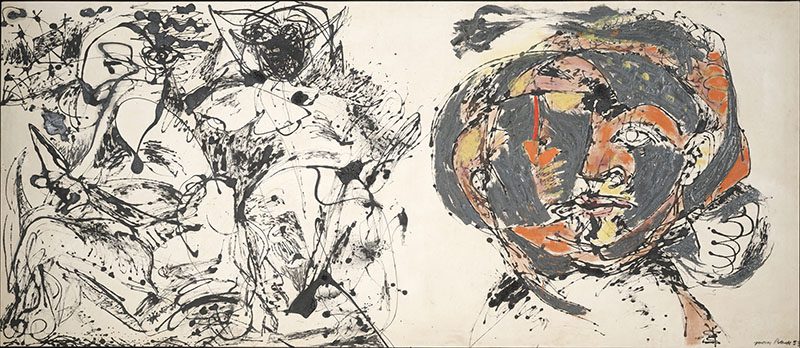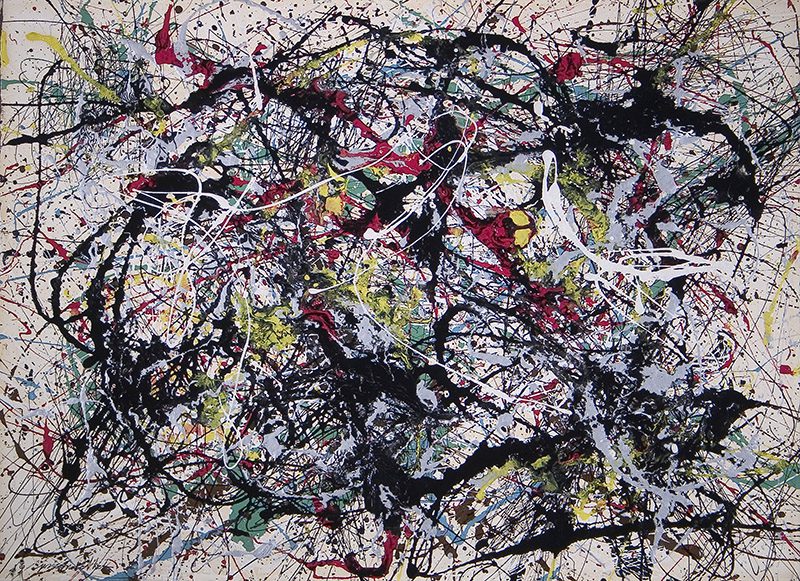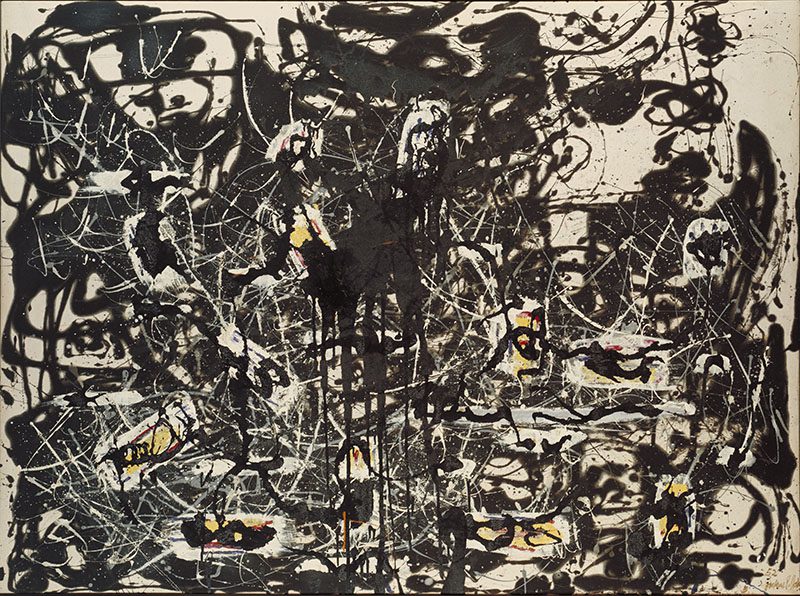ART-PRESENTATION: Jackson Pollock-Blind Spots
 One of the last great bodies of work from Jackson Pollock is on view at the Dallas Museum of Art (DMA). The exhibition, “Jackson Pollock: Blind Spots”, is the largest survey ever assembled of the all-black paintings and prints made between 1947 and 1953. These paintings followed the famous drip paintings that brought him to national notoriety, and were considered an aberration. None of them sold when first exhibited.
One of the last great bodies of work from Jackson Pollock is on view at the Dallas Museum of Art (DMA). The exhibition, “Jackson Pollock: Blind Spots”, is the largest survey ever assembled of the all-black paintings and prints made between 1947 and 1953. These paintings followed the famous drip paintings that brought him to national notoriety, and were considered an aberration. None of them sold when first exhibited.
By Efi Michalarou
Photo: Dallas Museum of Art Archive
The exhibition “Jackson Pollock: Blind Spots” includes70 works, including paintings, sculptures, drawings, and prints, many of these works have not been exhibited for more than 50 years. “Jackson Pollock: Blind Spots” offers critical new scholarship on this understudied yet pivotal period in the artist’s career and provides radical new insights into Pollock’s practice. There were two exhibits of the all-black paintings at Betty Parsons Gallery, New York in 1951, with another collection shown at Sidney Janis Gallery, New York in 1952, and not a single one sold. They weren’t popular then and, in the ensuing years, they had been almost excluded from Pollock exhibitions. They were considered aberrations that’s the reason for the “Blind Spots” title. They were quite important, though, to subsequent generations of painters, and they have become treasured for their seminal influence. In the ensuing years, some were believed to have been lost. Others have not traveled for decades. They had become almost lost to the timeline of American art. The exhibition at first introduces audiences to Pollock’s work via a selection of his classic drip paintings made the period 1947-50. These works will serve to contextualize the radical departure represented by the black paintings, a series of black enamel paintings that Pollock created between 195-53. An unprecedented 31 black paintings are included in the DMA presentation, nearly double the next largest survey of these works (which was presented at the Museum of Modern Art in 1967). While Pollock avoided making any representational marks in his drip paintings, in these, he didn’t mind referencing body parts or recognizable flora and fauna. Body parts, small birds and Pollock’s handprints are easily evident, as some of these canvases are sparsely painted. In these, it is easy to see the elegance of Pollock’s lines. Also featured in the exhibition are 30 works on paper made by Pollock during the same period as the black paintings, made with enamel and ink and watercolor. The exhibition also features five of Pollock’s virtually unknown and rarely seen sculptures, giving viewers the opportunity to reconsider his intentions as an artist and provide a true three-dimensional experience of his well-known painting approach. Together with the 37 paintings on view, these works immerse audiences in Pollock’s complete oeuvre and shed new light on the experimentation and ingenuity that has become synonymous with his practice.
Info: Curator: Gavin Delahunty, Assistant Curator: Stephanie Straine, Dallas Museum of Art, 1717 North Harwood, Dallas, Duration: 20/11/15-20/3/16, Days & Hours: Tue-Wed & Fri-Sun 11:00-17:00 Thu 11:00-21:00, www.dma.org



